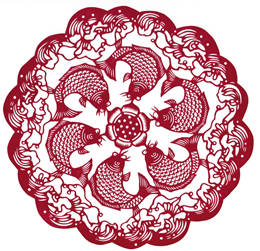I am still unwinding my brain from the Information Overload Research Group (IORG) ‘un-conference’ in San Francisco last week.
IORG is a 5-year old coalition of academics, business owners and consultants – all volunteer. I’d learned of it only a few weeks earlier. The topic intrigued me. The timing and location couldn’t have been better. I signed up.
About two-dozen of us gathered on Saturday morning. My guess is that half were founding members and half, like me, had just learned about IORG.
While no one defined information overload (IO), the focus was email and other workplace distractions. Attendees included software developers, digital librarians, consultants in technology and organizational design, professors, communication strategists and a Pentagon officer.
Our conversations were rich and animated. But given our many points of reference, I don’t think we were always speaking the same language. Even so, I set aside my inclination to play ‘clarity cop’ when people responded in ways that seemed to miss another’s meaning.
Because IORG is a research group, a good part of the day was devoted to data: the measures and costs of IO, the time it takes to recover from an interruption. We learned about techniques to focus, technologies to filter and apps to streamline work.
Within the first hour, it struck me that people were referring to IO in the context of quantity alone. So I asked, “Assuming we find ways to reduce the amount of information, do you believe IO will be solved?”
My question turned into a discussion. People agreed that too much ‘critical information’ arrives incomplete, buried in irrelevant data or so poorly written that it’s all but useless. This led to discussions about behaviors that exacerbate IO: failure to understand strategic intent, too much work and workplace anxiety.
After the conference, over dinner with a friend, I thought about what we didn’t talk about. Kathy Budas, marketing director for Yerba Buena Center for the Arts, was telling me how her work has changed, that reaching an audience is no longer about TV spots or direct mail; it’s about tapping into communities of people who share interests and values, and care more about their connections with one another than about your brand.
Ours wasn’t a gripe session, rather a shared excitement about working in a time when conversations and connections with people are more powerful than marketing to people.
I began to wonder if better conversations and connections at work could help reduce IO. There is, or should be inherent respect in genuine connections – that awareness of with instead of to. It’s easy to be a generator of information overload. We’re not just victims. When we use technology, we can all do a better job of asking more clearly, reading more carefully and sending only what’s needed.
In the days since the un-conference, I’m still thinking about all I learned. And I’m interviewing everyone who crosses my path. While I look at IO in terms of clarity, people respond in a variety of ways. Some say they hide behind email rather than talk to difficult coworkers. Some admit to dumping documents on others as a way to stall when they simply don’t have time for a thoughtful response. The physician next to me on the plane back to Cincinnati describes IO as the glut of texts from colleagues who never take the time to talk in person, but text so hurriedly they send misinformation.
I am thrilled to have discovered IORG. The members are doing important work and I’d like to contribute to the effort, especially if conversation and connection might be part of the answer.
